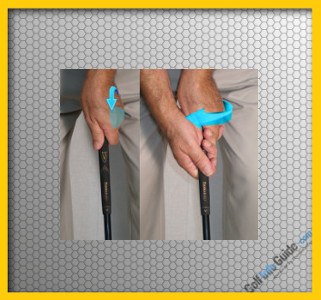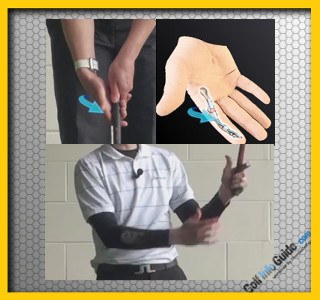A strong grip in golf is the sign of strength and finesse. Many players over time have been very successful with a strong grip. Major champions Paul Azinger, David Duval and Zach Johnson all come to mind. Even today on Tour many players are adopting a strong grip. Juniors are taught it at a very young age. There’s no secret that with the latest technology the ball flies much straighter allowing these players to swing harder and utilize a strong grip.
With a strong grip the golf club remains passive through impact much longer than in a neutral or weaker grip. Because of this, these younger men and women can utilize the ‘core’ of their body to create rotational speed that accelerates the club head. If you were to walk down the line of a PGA Tour driving range you would see nearly every player under the age of 30 playing with a stronger grip. Coaches of today have created swing programs based on a strong grip and speeding up the body’s rotation.
Ball flight from these players is lower and more penetrating. They compress the golf ball at impact like no one before them. Though the strong grip in recreational golfers produces a draw or hook, for the elite players they like to play a fade or left to right shot. A strong grip also allows the hands and wrists freedom in the swing, which promotes touch and feel with wedges. It’s no secret that the finest wedge players are the ones that utilize a strong grip.
The following tips will help you understand why a strong grip is beneficial to your game.

Tip #1 Grip Starts with Your Routine
A common error with recreational golfers is they like to grip the club last when it comes to their routine. We see it often when a player gets their yardage, selects their club, walks to their ball with one hand on the club, takes their stance, places the club face at the target and FINALLY put their hands on the grip. If you watch every Professional golfer, they start their routine by gripping the club. Once they grip it, the hands are secure until the shot is hit. If you’re working on getting comfortable with a strong grip, it becomes important that the hands get on the club first and stay in place. The only way you will gain confidence with a grip change is to get into a routine of placing your hands on the club properly and sticking with it.

Tip #2 Wrist Mobility – The Capitate Joint
Do you know what the capitate joint is? Not many people do unless you’re a doctor. However, the capitate is the middle joint of the three that connects your wrist and hand. This particular joint is largely responsible for mobility in your wrist. In the golf swing, wrist mobility is extremely important. Many golfers cover the capitate joint when they grip the club. This ultimately reduces the mobility needed from the wrist. When we grip the club strong, the club lies along the base of our fingers of the left hand (right hand for left handed golfers) and doesn’t cover the capitate joint. Those who grip the club weak, generally have the club higher in the palm restricting the wrist joints. The professionals that utilize a strong grip have some of the best hand action in their swings resulting in extreme distance and feel. If you wish have more distance and accuracy, move the club into your fingers and not the palm.






